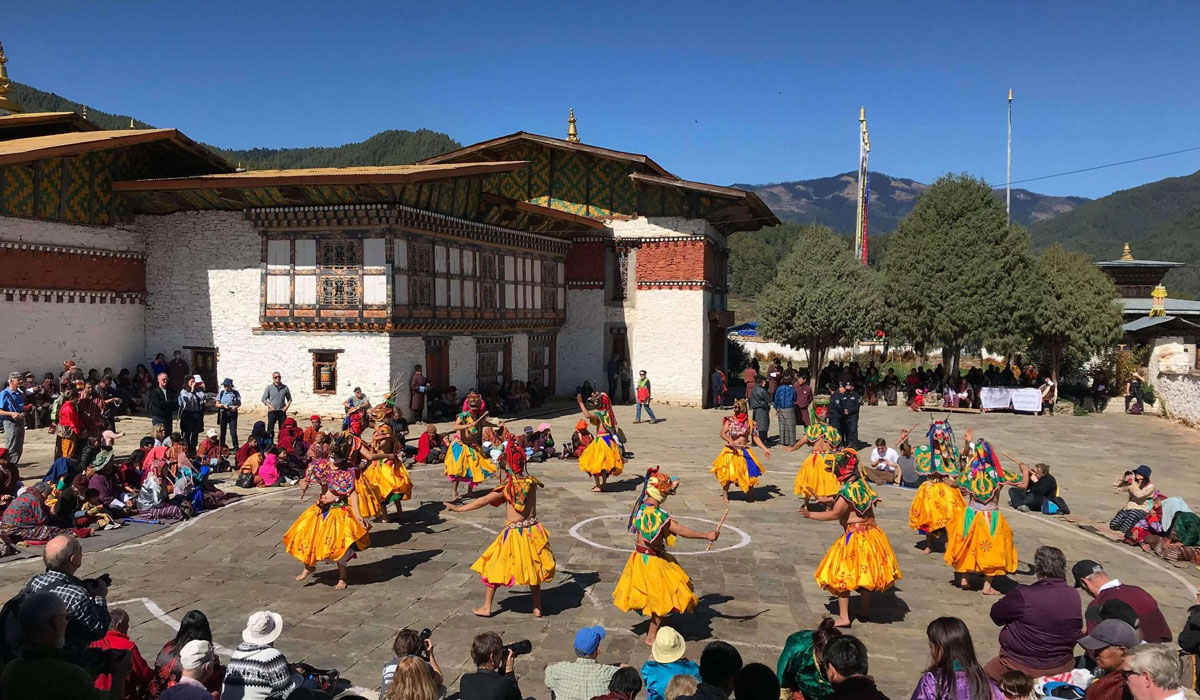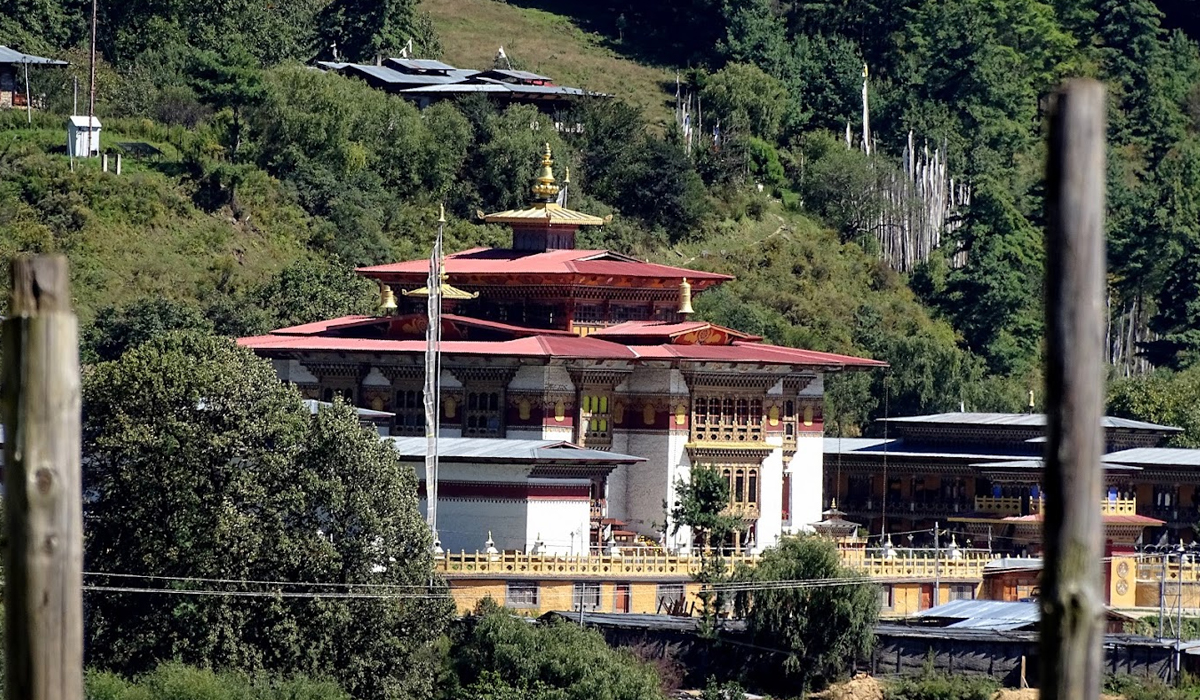


History of Jambay Lhakhang
Jambay Lhakhang, one of Bhutan’s oldest and most sacred temples, stands as a testament to the enduring spiritual and cultural heritage of the kingdom. Located in Bumthang, the heartland of Bhutanese spirituality, the temple was constructed in the 7th century by the Tibetan king Songtsen Gampo. It is part of a network of 108 temples he is said to have built across the Himalayan region to subdue a demoness and establish Buddhism in the area.
According to legend, these temples were strategically placed to pin down the demoness’s body. Jambay Lhakhang is believed to be one of the two temples built in Bhutan, representing her left knee, while Kyichu Lhakhang in Paro represents her left foot.
Architectural Features
The temple has undergone several renovations over the centuries but has retained its spiritual essence. Its design is a classic example of traditional Bhutanese architecture, with intricate wood carvings, vibrant murals, and sacred relics. The inner sanctum houses a statue of Maitreya, the future Buddha, along with other deities.
Religious Significance
Jambay Lhakhang plays a pivotal role in Bhutanese religious life. It is a focal point for annual festivals and rituals, most notably the Jambay Lhakhang Drup, a spectacular celebration that draws pilgrims and tourists from around the world. During this festival, the famed tercham (fire dance) is performed, symbolizing the purification of sins and the triumph of good over evil.
Cultural Legacy
Beyond its religious significance, Jambay Lhakhang serves as a repository of Bhutanese art, history, and folklore. It connects generations of Bhutanese people to their spiritual roots and provides a space for communal worship and cultural expression.
The temple remains a must-visit site for anyone seeking to understand Bhutan’s spiritual depth and historical legacy. Its timeless presence continues to inspire awe and reverence, embodying the enduring soul of the nation.
Bumthang - Places to visit

Kurjey Lhakhang is a sacred monastery in Bumthang, known for its spiritual significance and beautiful architecture, attracting pilgrims annually.

Jambey Lhakhang, one of Bhutan’s oldest monasteries, is renowned for its historical significance and vibrant annual Tshechu festival.

Mebar Tsho, the “Burning Lake,” is a sacred site in Bumthang, known for its spiritual significance and stunning scenery.

It is famous for its textiles, particularly the locally woven woolen fabrics called “Ura Shing” and “Ura Rachu.”

It has a large prayer wheel, a collection of ancient Buddhist scriptures, and a sacred prayer flagpole.

It is one of the six main Nyingma monasteries in Bhutan and is considered to be one of the most important monasteries.

The monastery has a unique architectural style with intricate wood carvings and paintings that depict life and teachings.

It was established in 2007 by Swiss brewer Fritz Maurer, who had a vision of bringing high-quality beer to Bhutan.

It is known for its ancient frescoes and murals that depict the life and teachings of Buddha, as well as the famous Jataka tales.

The temple houses several important relics, including the sacred chain mall of Terton Pema Lingpa.

It is also known for its collection of ancient Buddhist scriptures and manuscripts, many of which are written on handmade paper and are several centuries old.
